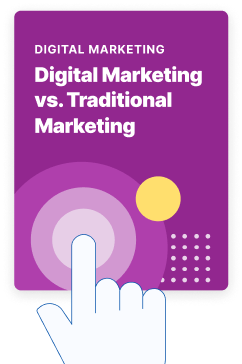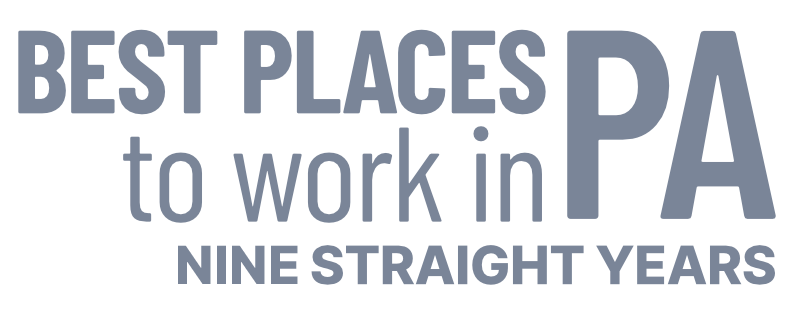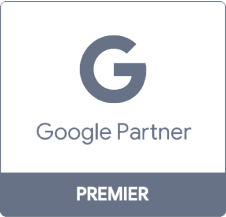Print Ads vs Online Ads
Print ads include direct mail, flyers, and ads in magazines and newspapers. Online ads include pay-per-click advertisements, banner ads, and social media. The two are clearly very different.
But how do they compare?
In the best case scenario, your business would use both print and online advertising methods to reach the highest amount of customers. But when it comes down to it, if you have to choose one or the other, online advertisements are simply the better choice.
Keep reading if you want to learn more, and give us a call at 888-601-5359!
Want to create online ads for your business?
Digital vs. Traditional Marketing
Download this guide to understand the key advantages, costs, and opportunities for each to decide which is best for your marketing strategy!
Get My Free Guide
Why online ads?

Online advertising has grown quickly in terms of both options and usage over the past few years, but many marketers still question whether or not it’s really more effective than traditional print advertising. Here’s why so many businesses are making the switch:
- 87% of Americans are Internet users
- Internet marketing allows companies to reach consumers as they’re actively searching for products, as opposed to interrupting them during other activities
- Internet marketing strategies allow for much more advanced tracking and analytics
- Online advertisements cost less
- Online targeting is much more specific
Now, we’ll take a closer look at the advantages online ads offer in terms of your audience, goals, and budget.
Who is your target audience?
Some people assume online ads will appeal to a younger audience, while print will appear to an older audience. This isn’t necessarily true. Internet users are diverse, and even in the age group with the lowest adoption rate (65+), the percentage that are Internet users is still 57%.
Fortunately, no matter who your target audience is, you can reach them with the advanced targeting options that online advertising offers. On PPC platforms like Google Ads, you can target users based on the keywords they search for.
On social media platforms, you can choose your targeting based on age, location, gender, and interests. You can also create several ads with different content, and select different audiences for each.
With print ads, you’re relying on a press kit. The press kit for a magazine, newspaper, directory, or other print medium will tell you how many readers read a specific publication, their median income, their age range, and their location.
Based on this, you can decide where you want to advertise. If you decide to use a flyer or direct mail, you can rely on demographic information based on a specific location or mailing list. And although this can help you get a general idea of who you’re reaching, it’s not nearly as targeted as online options.
What are your goals?
If your goal is to grow brand awareness and reach consumers who are actively searching for your products and services on search engines like Google, online advertisements are the clear winner. If your goal is to drive more people to your business’s physical location, both print and online advertising can be useful.
With search engine optimization, you can optimize your site for keywords that relate to both your services and your location. That way, when potential customers search for what you offer, they’ll not only see your business, but also exactly where it’s located.
Online ads also have the advantage of being accessible no matter where a customer is. Thanks to smartphones and other mobile devices, you’ll always be able to reach them when you advertise online.
What is your budget?
The cost of print ads is hard to gauge, since costs can vary widely. A color advertisement on the first page of the New York Times can cost you hundreds of thousands of dollars, while an ad in your local paper may cost you well under $100.
Advertising on Facebook, Google, and other popular platforms depends on the keywords in your ad and your targeting. However, you can set your budget ahead of time, and stop advertising as soon as you hit it. You can set your budget to a few dollars a day—provided the keywords you choose don’t cost more than that.
The cost-per-acquisition for mobile and social ads in 2015 was $16-18, according to one survey, compared to $41-50 for display ads, $21-$30 for paid searches, and $11-$15 for e-mail. In comparison, direct mail had a competitive $19 cost per acquisition rate.
Ready to start advertising online?
If you haven’t yet taken advantage of online advertising opportunities for your business, now is the time to start. And if you’d like some assistance choosing the right channels and managing effective campaigns, WebFX can help.
Contact us today to speak with a strategist!
Related Resources
- Is Display Advertising Effective?
- Keyword Marketing: How to Do Keyword-Based Advertising
- Need to Promote Your Business? Learn How to Advertise Your Business with These 7 Tactics
- Podcast Advertising 101: How It Works and How to Get Started
- Programmatic Advertising 101
- Radio Vs Internet Advertising
- Revenge of the Pop-Ups: Does Your Website Need One?
- Subliminal Advertising: Definition and Examples
- The 2 Best Ad Placements I’ve Ever Seen
- What Getting Engaged Taught Me About Online Advertising Opportunities
Marketing Tips for Niche Industries
- HVAC Advertising Strategies
- LegitScript Certification for Rehab Centers
- LegitScript for Google Ads
- Local SEO for Building Material Suppliers [+4 Tips for Success]
- Top 3 Online Advertising Services for Contractors
- What Are Co-op Advertising Dollars, and How Can They Help You?
- What is Industrial Advertising and Why Invest in Industrial Digital Advertising?
- Your Guide to Google Local Services Ads for Garage Door Companies
- YouTube Ads for Ecommerce: 5 Tips for YouTube Ecommerce Ads
- 3 Fantastic Farmers Market Advertising Ideas









